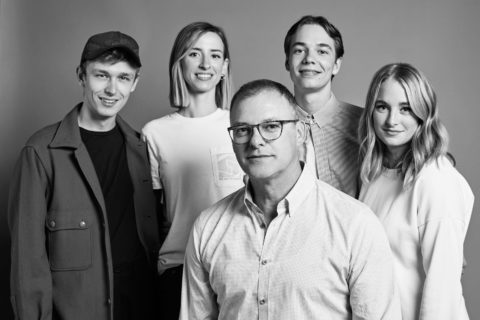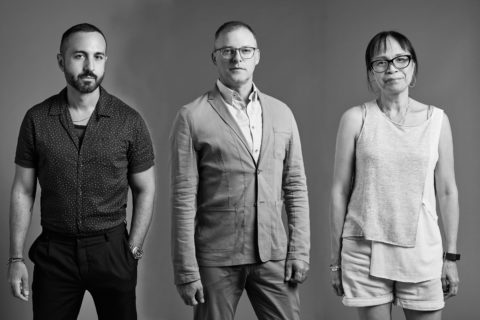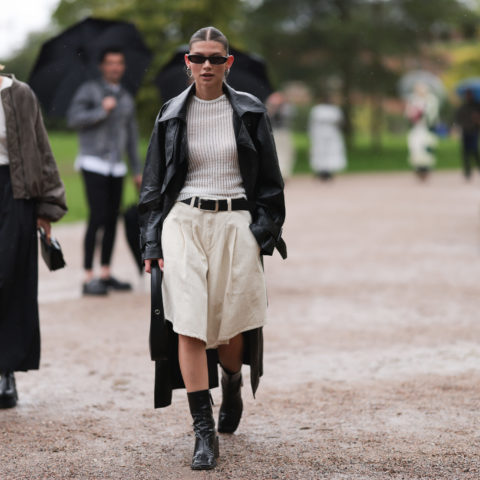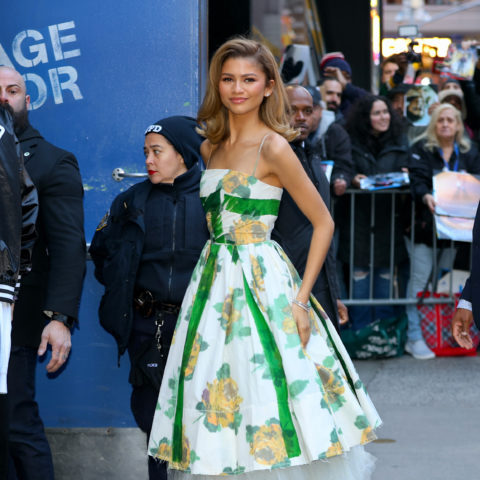Meet the Next Generation of Great Canadian Designers
We teamed up with The Suzanne Rogers Fashion Institute and Garnier to find and foster the next generation of Canadian designers.
FASHION X GARNIER x SRFI
Did you know that it only takes 90 seconds for most people to decide if they like someone or something and that 62% to 90% of the time, that assessment is based on colour alone? So, colour matters—whether it’s the hue of our hair or the shade of our dress. That connection was the inspiration behind the Ultra Color Challenge that we launched this summer with Garnier Nutrisse Ultra Color and The Suzanne Rogers Fashion Institute (SRFI). We tasked the three inaugural design fellows to create a look inspired by colours from the Garnier Nutrisse Ultra Color line. Stephanie Moscall-Varey was assigned Ultra Color DB Intense Bleach, Alexandra Armata 326 Deepest Violet and Quentin Tecumseh Collier 462 Temping Raspberry red.
Curious to see what they did? Read on.
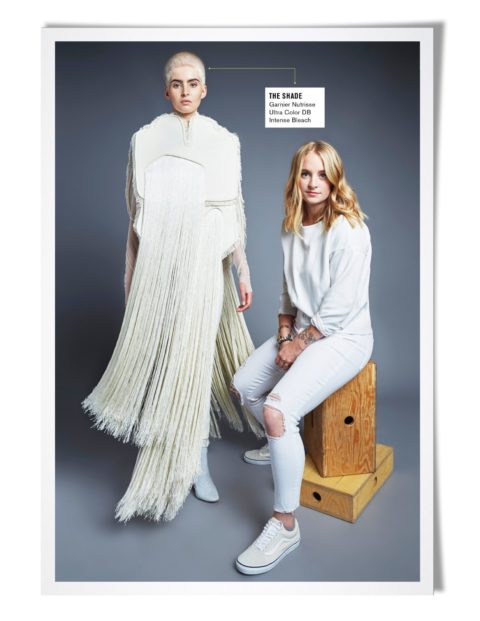
Stephanie Moscall-Varey
How it all began
Moscall-Varey didn’t grow up wanting to draw patterns and drape fabric; she wanted to be a genetic scientist. The 24-year-old designer from Port Dover, Ont., had her eureka moment when she was lying in a hospital bed recovering from meningitis in her last year of high school. “Instead of spending time in a lab, I knew I wanted to do something I was truly passionate about,” she says.
The Next Steps
Moscall-Varey attended Ryerson University’s Fashion Design program and graduated in 2015. In 2016, she was tapped by Vancouver Fashion Week to produce a collection while holding down a full-time job as a technical designer at Abercrombie & Fitch HQ in Columbus, Ohio. “My November to March was: Wake at 5 a.m. to sew and pattern draft, go to work by 9 a.m., work there until 6, 7 or 8 p.m. and then go home and work until midnight or 1 a.m.,” she recalls. “I calculated I spent the same amount of time at Abercrombie that I did on my collection.” The result was a delicate womenswear collection featuring organic lines and botanical patterns rooted in the geography of Canada.
Her design process
Winging it isn’t an option for Moscall-Varey, who brings a scientific-like accuracy to her design process. In 2015, she created a dress for the Italian Contemporary Film Festival design competition that was inspired by the dance sequence “La Colita” in the film The Great Beauty. Before creating the dress, whose silhouette was highlighted by the steps of the dance, Moscall-Varey learned the dance and videotaped herself performing it so she understood how the dress needed to move. “I set goals that could be considered unrealistic,” she says with a laugh. “But I’m always determined to accomplish them.”
The Fellowship’s Meaning
With plenty of experience in the mass retail world as well as at a small label—Moscall-Varey interned at Jeremy Laing’s now-shuttered fashion brand—she has her sights set on gaining a foothold in the luxury fashion world by interning at a couture house in Europe.
The Ultra Color Challenge
Moscall-Varey wanted her bleach-blonde-inspired outfit to resemble grass undulating in the wind, so she nailed fabric samples to a tree in her parent’s backyard before deciding she liked the breezy movement of a 40-inch-long fringe best.

Anne-Claire Sauret
Her Model
Anne-Claire Sauret went into modelling because she wanted to have an envy-inducing lifestyle that involved glamour, adventure and some travel. She sent her photos out to various agencies and was eventually signed by modelling agent Chantale Nadeau. In the one year she’s been working, the 20-year-old Montreal-based model has sported five different hairstyles. Going from brown to blond for the Nutrisse Ultra Color Challenge didn’t faze her. With her short, spiky ’do, Sauret feels like “a badass” and resembles a platinum version of The Girl with the Dragon Tattoo. Now when she looks in the mirror, Sauret sees “a person who accepts who she is and isn’t afraid to do bold things.”
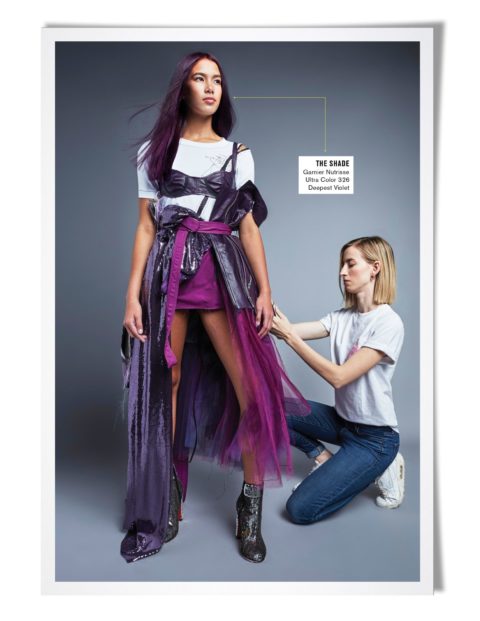
Alexandra Armata
How it all began
The 24-year-old Scarborough-born designer was always interested in art, but after she saw Savage Beauty, the Alexander McQueen design retrospective at the Metropolitan Museum of Art in 2011, she knew that this was her mission. Before she and her father drove to New York to visit the exhibit, she read about it and memorized all the details about the pieces. “At the end of the show, my father said, ‘You should definitely study fashion,’” she recalls. “I think that was the biggest moment for me, because it felt like I had my parents’ permission, which was important to me.”
The Next Steps
Armata graduated from Ryerson University’s Fashion Design program in 2016 and was nominated for a Canadian Arts & Fashion Award in the Fashion Design Student category. She was a finalist in New Zealand’s iD Emerging Designer competition and has worked as a contract designer for Vejas Kruszewski, the Canadian wunderkind who won the prestigious—and lucrative—LVMH Prize last year.
Her design process
“I like to have a narrative or a concept with my designs,” she says. Though her approach to design is thoughtful and intellectual, Armata sometimes finds that her best work comes from improvisation. “As much as there’s that understructure and there’s a sketch and it’s planned, I want part of the design to just be spontaneous.”
A Famous Client
When Armata worked with Kruszewski, she helped create the wardrobe for Drake’s Summer Sixteen tour. Her handiwork has graced the superstar Canadian rapper and, by association, came into close contact with Rihanna. Armata spied a photo taken of Drake dancing with Rihanna while wearing Vejas denim and couldn’t believe it: “Rihanna’s ass touched the jeans I made—it’s amazing!”
The Ultra Color Challenge
“My piece for Garnier is a coming-of-age story,” says Armata. “There are elements that are iconic to a specific time in your life, when you’re transitioning from being seen as a girl to being seen as a woman.” Armata’s dress comprised sequins—a nod to a prom dress (“a cheesy but quintessential eveningwear fabric”)—a deconstructed leather jacket (“it reminded me of my first moto jacket, which made me feel like a badass”) and a bra top (“women wear bras and girls don’t!”).
The Fellowship’s Meaning
Armata will begin postgrad studies in womenswear this September at the lauded London College of Fashion, which counts Jonathan Anderson and Jimmy Choo among its alumni.
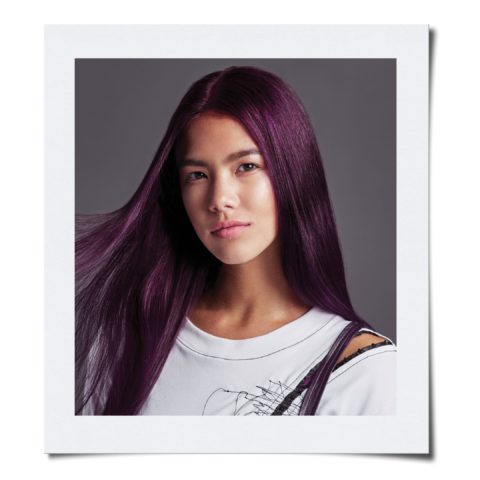
Abigail Pew
Her Model
On her 13th birthday, Abigail Pew was enjoying brunch with her family at the Dundas Street Grille in Toronto when a photographer suggested to her parents that she be a model. Pew did eventually sign up with an agency, and she is now a working model. For this assignment, Pew says she was a little nervous about going violet but loved her new colour as soon as she saw it. “It’s kind of punk rock,” she says with a smile. Pew resembles a modern Edgar Allan Poe-esque heroine, and the hue isn’t too far of a departure from her raven locks. Now that she has experienced an offbeat hair colour, she says she is more open to adventurous shades.
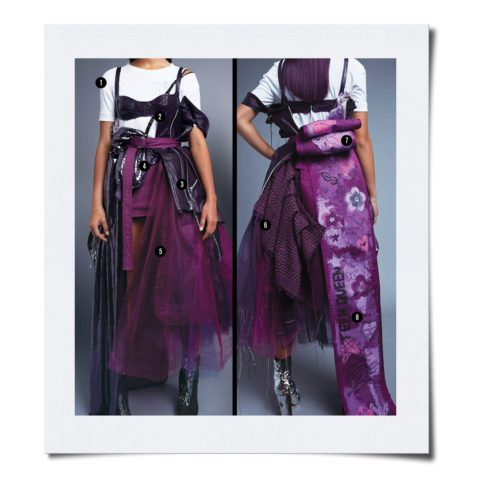
Anatomy of Armata’s Dress
- T-shirt • a plain T-shirt is a wardrobe staple whether you’re a kid or an adult.
- Bra top • the act of buying a first bra is often a coming-of-age ritual for girls; it signifies the transition from girlhood to womanhood.
- Leather jacket • Armata bought her first leather jacket when she was about 15; she felt cooler and more mature when she wore it.
- Sequins • the sequin panel is an almost fully constructed eveningwear dress. The sequins represent a special occasion like prom, where young women dress up in fancy eveningwear and play-act at being adults for a single night.
- Tulle • reminiscent of a tutu, like the ones little girls wear to ballet class.
- Tweed • a reference to the plaid suit worn by Cher Horowitz in the high school pop-culture classic Clueless.
- Floral • a feminine fabric for a feminine garment.
- Doodle Sash • “it’s supposed to look like a notebook that teenage girls write in when they have a crush,” says Armata.

Quentin Tecumseh Collier
How it all began
If Quentin Tecumseh Collier could be described in one word, it would be “precocious.” The boy wonder first began staging fashion shows in the sixth grade, and by high school he had graduated to designing two collections a year. His interest in fashion stems from an early love of playing dress-up. “I basically grew up in drag,” he says with a laugh.
Tecumseh Collier also studied ballet but turned to fashion after three members of his extended family passed away when he was 11 years old. “After that, I switched gears and focused all of my energy on making clothes and making women beautiful,” he says. Fashion was also an escape for a boy who never felt like he fit in. “It became an outlet for me to be who I wanted to be,” he recalls. “I found it so liberating that I just devoted my entire adolescence to it.”
The Next Steps
In 2015, the 20-year-old designer from Kamloops, B.C., enrolled in Ryerson University’s Fashion Design program. He had been accepted at Parsons School of Design and the London College of Fashion, but he had to turn these down for financial reasons.
His design process
Tecumseh Collier brings an integrity and thoughtfulness to his work. For one assignment, he explored queer issues by deconstructing men’s garments and creating gender-neutral pieces inspired by Jacques Derrida’s theory of deconstruction. He is also focused on quality, versus quantity, now. “Rather than design an entire collection as an extracurricular activity, I spend a lot more time making one thing beautifully, finishing all the seams and making pieces with a high level of craftsmanship,” he says.
The Ultra Color Challenge
Tecumseh Collier says that he is trying to capture the emotion the colour red evokes. The heart is central to his design for this challenge as it reflects “the hate, the anger and the love that are essential experiences in life.” He adds that his designs also reflect where he is in his own life. In this case, he’s madly in love. “It’s been an experience,” he says. “First love, 20 years old, life-changing. Yeah, the heart is a very robust and tender thing. I’m slowly learning that.”
The Fellowship’s Meaning
As the youngster of the group, Tecumseh Collier will enter his third year of undergraduate studies while he completes the fellowship. He’s excited about the resources and networking opportunities the fellowship offers as well as the opportunity to discover more about his design aesthetic. “It’s a little bit of extra support while I find myself,” he says.
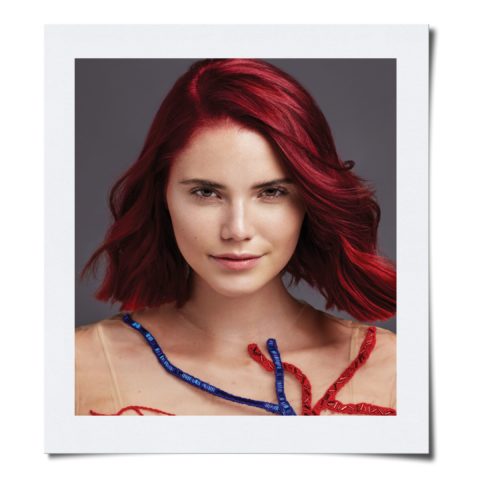
Maude Perreault
His Model
Maude Perreault often spent her free time after school dressing up for photo shoots with her friends, but she was surprised when an acquaintance encouraged her to be a model. The 20-year-old Montrealer visited Ema Models when she was 18 and was signed within five minutes of walking through the door. A week later, she was shooting campaigns for Simons. Perreault had never dyed her hair before the Garnier Ultra Color Challenge, but she’s loving the assertive confidence that red hair brings to her look. Now she’s ready to pair the look with all-black outfits—just like Jennifer Garner’s revenge-bent super-spy character, Sydney Bristow, in Alias. “It’s cool because I never would have done it myself,” she says.
Style
3 New Designers Find a Muse in Unconventional Hair Colours
FASHION X GARNIER x SRFI
Style
Meet the Mentors Who Are Fostering Canada’s Next Gen Designers
FASHION X GARNIER x SRFI

